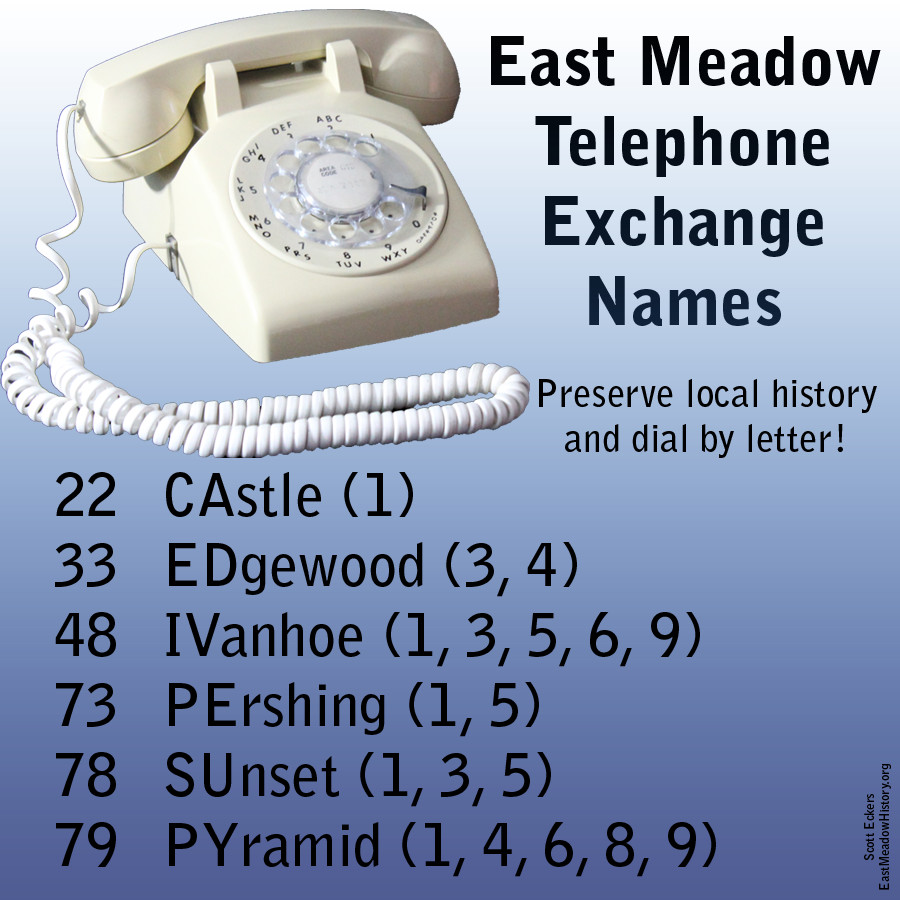A LOOK BACK with Dr. Scott Eckers
What's in an EXchange Name?
Here in suburbia, the telephone, like automobiles and televisions, helped define the consumer-driven 1950s. Its history on Long Island is fascinating and woven into the fabric of society. If you still have a traditional landline phone, there is a very good chance that your number hearkens back to a simpler time — a time when numbers helped form a strong sense of identity.
It might seem unusual to associate numbers with the formulation of a local identity or culture, but that is exactly what "Ma Bell" did when it brought the telephone to Long Island. In 1948, as the postwar Baby Boom took off in earnest in Nassau County, New York Telephone Company (now Verizon) decided to standardize telephone numbers to the seven-digit format used in New York City and other major metropolitan areas. This transition would help the county's residents prepare for dial service, which was phased in over the next few years, and direct-dial long distance service, which became available here in 1959.
If you lived in East Meadow before the 1950s, your phone number was merely a way to assist the local operator. You would pick up the phone, which had no dial, and ask the operator to connect you to a certain number. She would happily oblige, completing your call with quarter-inch phone plugs still used today on headphones and guitars. All the phones in your neighborhood were connected in one central office, or telephone exchange; making a long-distance call was a lengthy and expensive proposition, connecting exchange to exchange until your phone connected with someone else's in a distant city.
To make the telephone service more human — and make numbers easier to remember — each central office was given an exchange name, typically corresponding to the village in which the operator worked. Since these could not be dialed, the names and numbers didn't much matter. Living in East Meadow, your telephone would have been serviced by an operator in Hempstead, Wantagh, or Hicksville. After 1948, those exchanges modernized and customers could dial subscribers in most local exchanges without speaking to an operator.
By midcentury, the standard convention in the United States was called 2L+5N dialing, where one dialed the first two letters of the exchange name, the digit of the exchange, and the four-digit subscriber number. The earliest exchanges were merely named after their locations. When you dial a friend in Lynbrook, you first dial 59 on the telephone: LYnbrook. Cousin in Rockville Center? ROckville Center. In a blow to local identity, some of these names began to change in the early 1950s. Numbers in certain combinations — including HEmpstead — were overlapping with Brooklyn numbers like GEdney and HEgeman and beginning to run out. The telephone company introduced new exchanges with names that were easy to remember and hard to mispronounce, hence the arrival of a well-known East Meadow exchange name, IVanhoe.
A socioeconomic battle of the dials played out in East Meadow when the telephone company planned to convert many HIcksville exchanges to LEvittown. According to a March 1952 Newsday article, "Residents living in non-Levitt homes built in Hicksville and Wantagh are supporting the East Meadow residents (living in non-Levitt homes) in their fight to stay clear of Levittown by name if not geography." East Meadow firemen and taxpayers' association members campaigned against the name, fearing the social stigma that association with recently-constructed, relatively cheap neighborhoods in Levittown might bring. Enter PErshing 5 instead! Many homes near the Wantagh Parkway still use this exchange.
When my caller ID displays an IVanhoe number like 481, I am more likely to answer the phone. I am confident that a friend in Salisbury is trying to reach me when it displays an EDgewood number like 334. My favorite businesses have PYramid numbers like 794. These names helped East Meadow develop its own sense of identity through the 1980s. How wonderful it would be to regain that simple pride today!
Dr. Scott Eckers is the author of East Meadow in Arcadia Publishing's Images of America series. He is Vice President of the East Meadow Board of Education as well as Social Studies Chair for the East Williston School District. Scott is also an entertainer and recording artist.

 50.0°,
Overcast
50.0°,
Overcast 




